There had been a lot of talk about the decline of honey bees for a while, and then you heard less about it. As researchers were working to pinpoint what exactly was causing their demise, the news world moved on to more interesting topics. Now suddenly, after officials sprayed pesticides aimed at mosquitoes potentially carrying the Zika virus, they are sadly in the news again. Articles such as this one http://www.cnn.com/2016/09/01/health/zika-spraying-honeybees/ appeared all over the internet. This is a additional threat to the already threatened honey bee populations. So how can topics like this be addressed with children and families without both terrifying and upsetting them?
A program centered on honey bees is a good way to discuss an important and timely topic and a way to interest people in finding out more about how they can help the bees survive. Sharing some books about bees is a good way to begin. Some titles I like include Amazing Bees, by Sue Unstead; The Honey Makers by Gail Gibbons, and Zoom in on Bees, by Melissa Stewart (all non-fiction); and The Beeman, by Laurie Crebs and Valeria Cis; The Honeybee Man, by Lela Nargi and Kyrsten Brooker; Beekeepers, by Linda Oatman High; and The Bee Tree by Patricia Polacco (all fiction.)
After some stories about bees and information about beekeeping and the life cycle of the honey bee, it might be helpful to have models of the life stages of the honey bee. I use a set like this one, 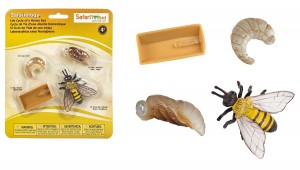 which is available through Amazon and a number of other retailers.
which is available through Amazon and a number of other retailers.
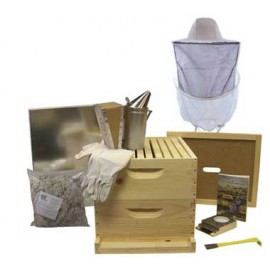 Having a beekeeper visit to talk about what she does is a great bonus; if you have access to equipment for the attendees to look at, that is even better. Kentucky has a State Apiarist and State Beekeeping Association, both of which are available for talks and to provide information. Other states are likely to have similar offices; if not, Extension Offices should be able to help with providing information or contacts for experts to share in your program.
Having a beekeeper visit to talk about what she does is a great bonus; if you have access to equipment for the attendees to look at, that is even better. Kentucky has a State Apiarist and State Beekeeping Association, both of which are available for talks and to provide information. Other states are likely to have similar offices; if not, Extension Offices should be able to help with providing information or contacts for experts to share in your program.
Some discussion about pollinators and pollinating should be included, and this can lead in to ways to help bee populations at home. Families and kids could brainstorm ways they might be able to help bees (not using pesticides, or planting bee-attracting plants, for example); older students could write letters to their congresspersons regarding legislation designed to support and encourage bees, or consider ways to provide habitat at their schools. Planting guides may be found at www.pollinator.org, among other places.
Additional discussion regarding where our food comes from can be included as well… it has been estimated that one of every three bites of food in the US is pollinated by bees. Those attending may have no idea that this is one of the reasons the decline in bee populations is such a big concern. Related to this, there is an activity kit available from Nature Watch (www.nature-watch.com) called Food Doesn’t Grow in the Supermarket. 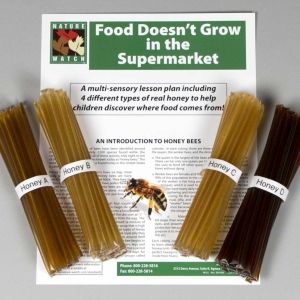 The kit includes some basic bee information and worksheets, but also comes with sets of four different flavors of honey for tasting, packaged in individually sealed “straws.” The worksheets guide participants in tasting the various types of honey and guessing which plants the bees foraged. When I used this in a program for families, the adults were at least as excited about trying different flavors of honey as the kids were!
The kit includes some basic bee information and worksheets, but also comes with sets of four different flavors of honey for tasting, packaged in individually sealed “straws.” The worksheets guide participants in tasting the various types of honey and guessing which plants the bees foraged. When I used this in a program for families, the adults were at least as excited about trying different flavors of honey as the kids were!
By providing information about how amazing bees are and how important they are to humans, we may encourage our patrons to look for ways to help them (and us!) survive!

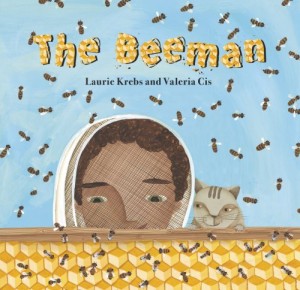
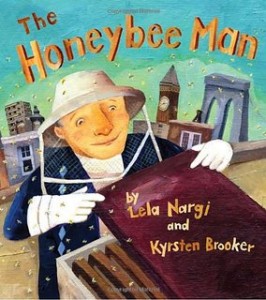
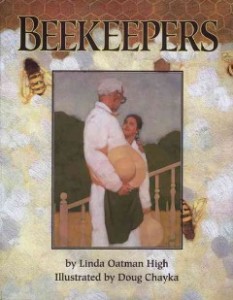
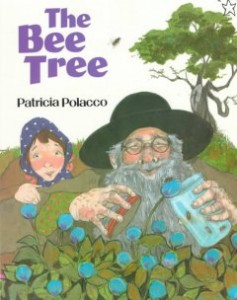



Leave A Comment